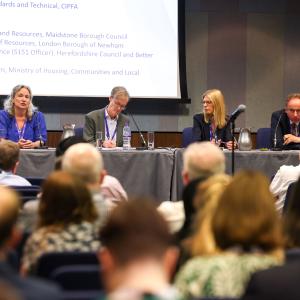
Jeffrey Matsu, chief economist at CIPFA
The future health of our public services is now in the hands of a new Labour government. Public services touch the lives of everyone, every day, from social care and schools through to bin collections and the criminal justice system.
The UK spends a vast sum of £800bn, or around £11,000 per person, on this vital infrastructure. But our public services are buckling under immense pressures from rising demand and higher costs.
Following years of underinvestment, services are slow and unreliable. From GP and hospital waiting lists to courts and prisons, backlogs and delays have become the norm.
Eight of the nine services covered in our latest Performance Tracker were performing worse on the eve of the pandemic than they were in 2009-10. Conditions have since deteriorated.
Nurses, junior doctors and teachers have all taken unprecedented industrial action in protest at low pay and poor working conditions as services struggle with ongoing staff shortages.
While these problems have been intensified by a trifecta of negative shocks – the pandemic, the cost-of-living crisis and Brexit – they are not new. It is a bleak picture and one that needs immediate attention from the incoming government. Fortunately, the prime minister has galvanised public support with a mandate for change.
There are no easy fixes, but five steps can help Kier Starmer ‘kick-start economic growth’ and rebuild the country.
First, Labour must take a whole system approach to public services if it is to create a sustainable, efficient sector fit for the future. This requires a shared vision across government for the outcomes it wants the public sector to deliver.
Funding some parts of the public sector while systematically under-resourcing others shifts demand pressures while creating problems further downstream. Bottlenecks in the health and care, criminal justice and local government systems are the most obvious examples.
Expecting unprotected departments to stomach real-term spending cuts of 4% without consequences would be wishful thinking.
Second, prioritise the review of local government funding with an independent commission to depoliticise decision-making and establish a fair finance system that supports local decision making.
According to the National Audit Office, councils have seen a 52% real-terms reduction in spending power since 2010-11, despite a huge surge in need for adult and children’s social care and accommodation for homeless families.
The fragmented funding system must also be streamlined and realigned to relative spending needs. While 82% of local authority funding comes from formula-based grants, these are distributed by over a dozen different government departments in a system that lacks transparency and is open to political expediency.
Third, protect capital budgets to boost long-term productivity. A significant reduction in capital funding across public services has resulted in a marked deterioration in the quality and quantity of our capital assets.
At the Ministry of Justice, for example, real-terms annual capital spending in the decade prior to the pandemic averaged less than half what it was in 2007-08. This hollowing out has led to acute overcrowding in a prison estate facing a maintenance backlog of £1.4bn in 2023.
To counter the tendency of departments to underspend or cover shortfalls in day-to-day spending, the Treasury should protect capital allocations for the duration of the next multi-year spending review.
Fourth, change the mindset around preventative spending. The government should view prevention as an investment in people and places, relieving pressure on public services by better managing demand.
When it comes to reducing inequalities and improving living standards, there is growing evidence that preventative approaches are effective. For instance, the Sure Start centres launched by Labour in 1998 are estimated to have yielded a net benefit of 9p per pound spent through improved educational attainment and higher lifetime earnings.
Meanwhile, severe cuts to local authority budgets since 2009-10 have led to more costly acute spending on children’s services, which is up by nearly 60%.
Lastly, embed robust frameworks for monitoring and evaluation. Good public financial management requires checks and balances to ensure transparency and accountability. Yet the National Audit Office reports that only 8% of the government’s most strategically significant projects in 2021 were evaluated robustly, while nearly two-thirds of the £432bn in total spending was not evaluated at all.
An outcomes-based approach to performance monitoring like the recent Outcome Delivery Plans can help policymakers identify what works and deliver best value.
By adopting a whole system approach that synchronises public spending on resource, capital and prevention, the government will be able to leverage efficiencies through coordination and scale. This will be particularly important as Labour undertakes a more muscular industrial strategy that seeks to crowd-in additional private sector investment.
Achieving a 5% productivity increase across the nine services in our Performance Tracker would equate to an additional £11.8bn in funding. After decades of comparatively low government investment, we may be at a renaissance moment.
Reform alone will not avoid the difficult decisions that now must be tackled. When considering tax and spending changes, the ‘how’ will be as important as the ‘how much’. After 14 years of political and economic turbulence, the public deserves clarity and coherence in how the long-awaited change will be delivered.












